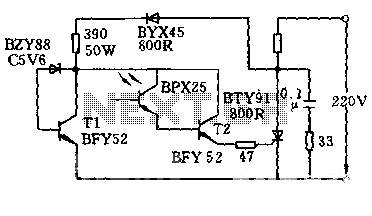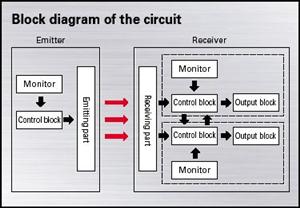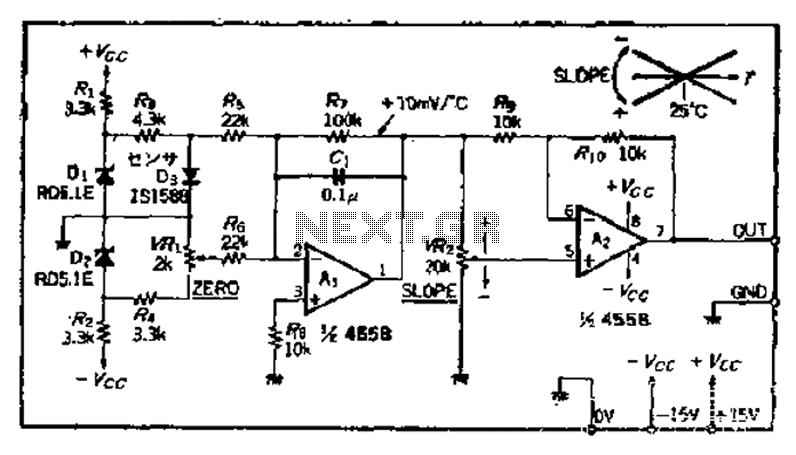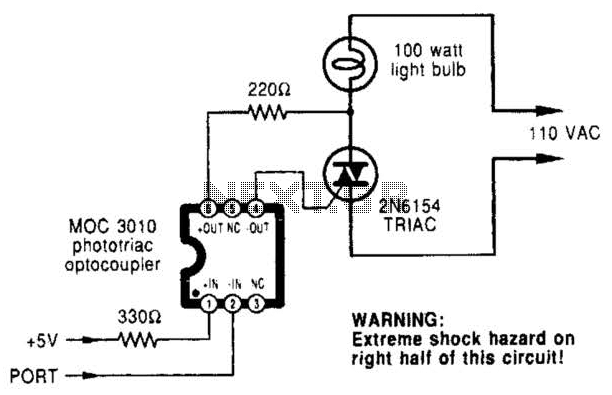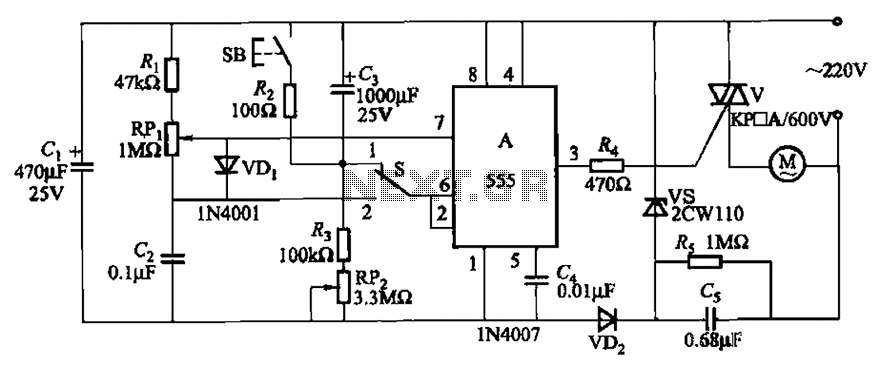
Improved multivibrator circuit
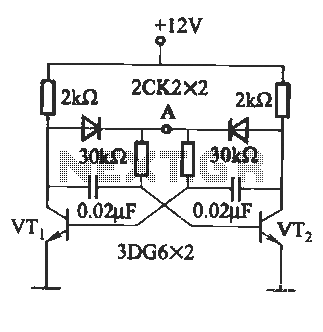
The circuit illustrated in Figure (A) consists of resistors R1 and R2 with values ranging from 15 to 18 kΩ, and capacitors C1 and C2 with capacitance values between 0.01 µF and 10 µF. Figure (B) depicts the oscillation frequency, which can reach up to 2 to 5 MHz. The resistor RP is adjustable via a potentiometer. Figure (C) shows that diodes and transistors can be utilized to prevent simultaneous saturation, thereby stopping vibration.
The described circuit appears to be a basic oscillator configuration, likely designed for generating high-frequency signals. The resistors R1 and R2, with their specified resistance values, form part of the timing components that determine the oscillation frequency. The capacitors C1 and C2 play a crucial role in setting the oscillation characteristics, where their capacitance values influence the charge and discharge cycles, ultimately affecting the frequency of oscillation.
In the context of oscillators, the range of 2 to 5 MHz indicates that this circuit is suitable for applications requiring high-speed signal generation. The adjustment of RP through a potentiometer allows for fine-tuning of the resistance, which can be critical for achieving the desired oscillation frequency. This feature enhances the versatility of the circuit, making it adaptable to various operational requirements.
The inclusion of diodes and transistors serves to stabilize the oscillator’s performance by preventing simultaneous saturation. This is important in maintaining the integrity of the oscillation and avoiding distortion in the output signal. Diodes can be used for clamping and protecting the circuit from voltage spikes, while transistors can serve as amplifiers or switches within the oscillator circuit, ensuring reliable operation.
Overall, this circuit design is indicative of a fundamental oscillator application, with components carefully selected to achieve specific operational parameters. The combination of resistors, capacitors, and active components like diodes and transistors allows for a robust design capable of generating stable high-frequency oscillations.Circuit shown (A): R], R2 is 15 ~ 18kn, Cl, C2 is 0.01 ~ 10 "F. Figure (b): oscillation frequency, up to 2 ~ 5MHz, RP is adjusted by potentiometer FIG. (C) access. diodes, transistors can be prevented by two simultaneous saturation stop vibration.
The described circuit appears to be a basic oscillator configuration, likely designed for generating high-frequency signals. The resistors R1 and R2, with their specified resistance values, form part of the timing components that determine the oscillation frequency. The capacitors C1 and C2 play a crucial role in setting the oscillation characteristics, where their capacitance values influence the charge and discharge cycles, ultimately affecting the frequency of oscillation.
In the context of oscillators, the range of 2 to 5 MHz indicates that this circuit is suitable for applications requiring high-speed signal generation. The adjustment of RP through a potentiometer allows for fine-tuning of the resistance, which can be critical for achieving the desired oscillation frequency. This feature enhances the versatility of the circuit, making it adaptable to various operational requirements.
The inclusion of diodes and transistors serves to stabilize the oscillator’s performance by preventing simultaneous saturation. This is important in maintaining the integrity of the oscillation and avoiding distortion in the output signal. Diodes can be used for clamping and protecting the circuit from voltage spikes, while transistors can serve as amplifiers or switches within the oscillator circuit, ensuring reliable operation.
Overall, this circuit design is indicative of a fundamental oscillator application, with components carefully selected to achieve specific operational parameters. The combination of resistors, capacitors, and active components like diodes and transistors allows for a robust design capable of generating stable high-frequency oscillations.Circuit shown (A): R], R2 is 15 ~ 18kn, Cl, C2 is 0.01 ~ 10 "F. Figure (b): oscillation frequency, up to 2 ~ 5MHz, RP is adjusted by potentiometer FIG. (C) access. diodes, transistors can be prevented by two simultaneous saturation stop vibration.
